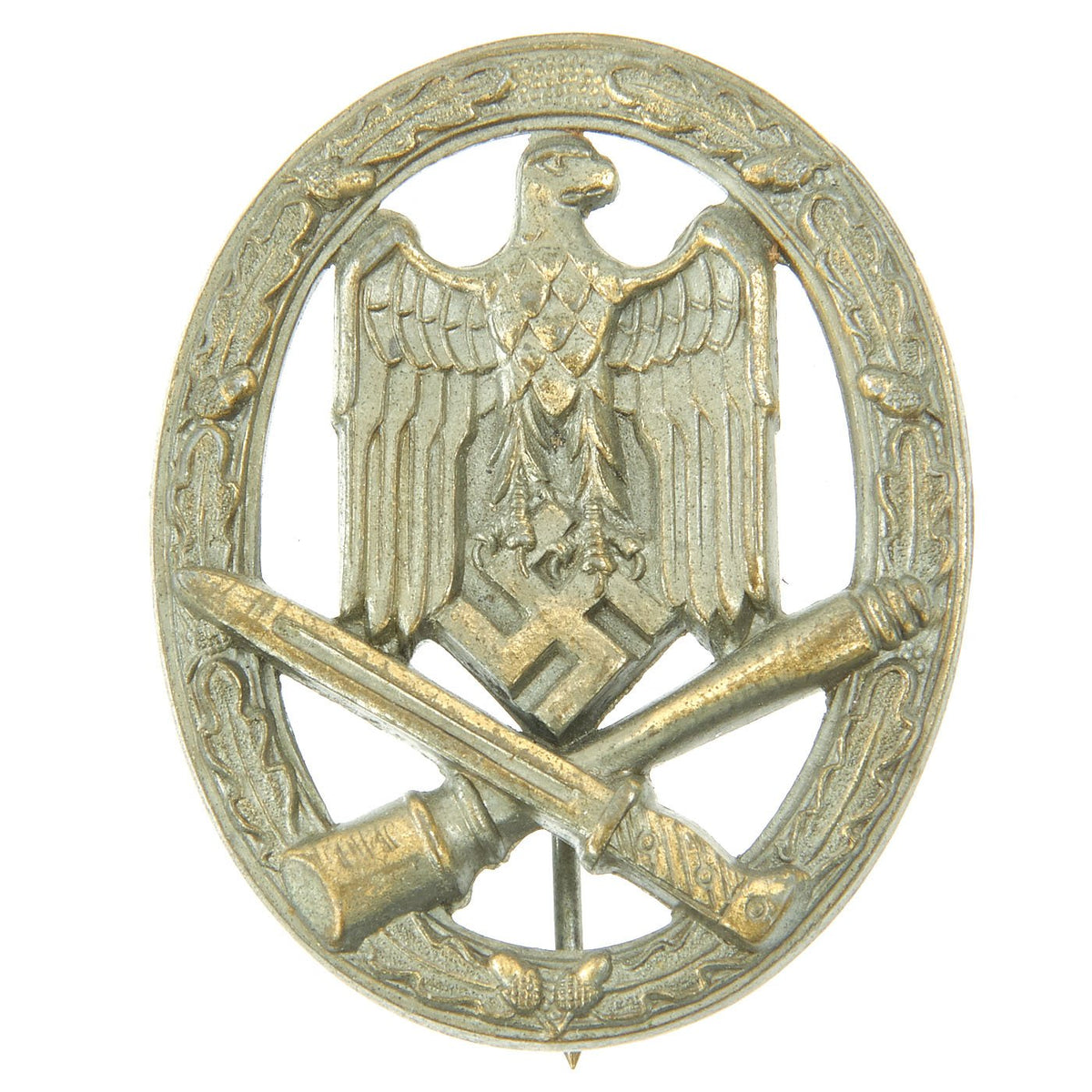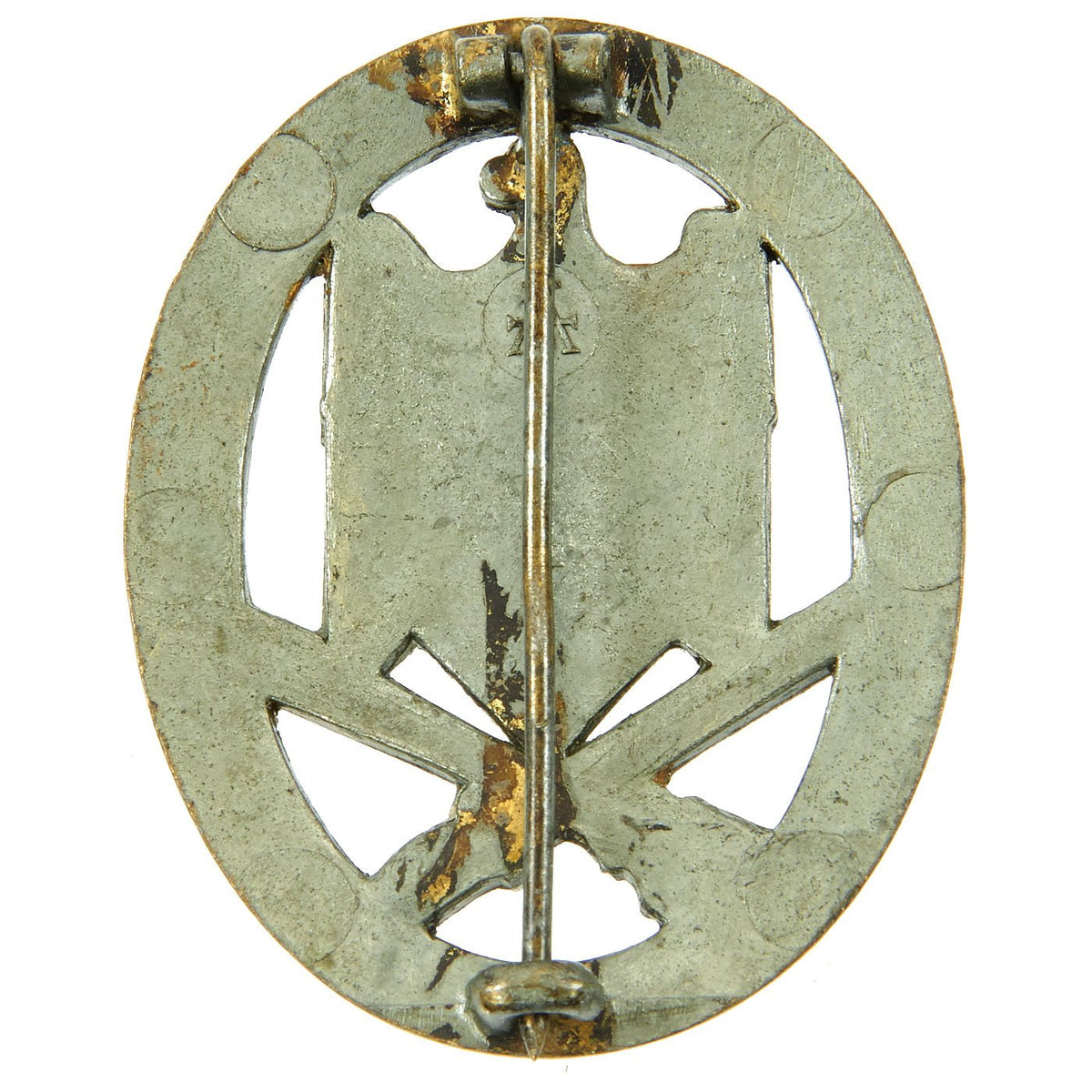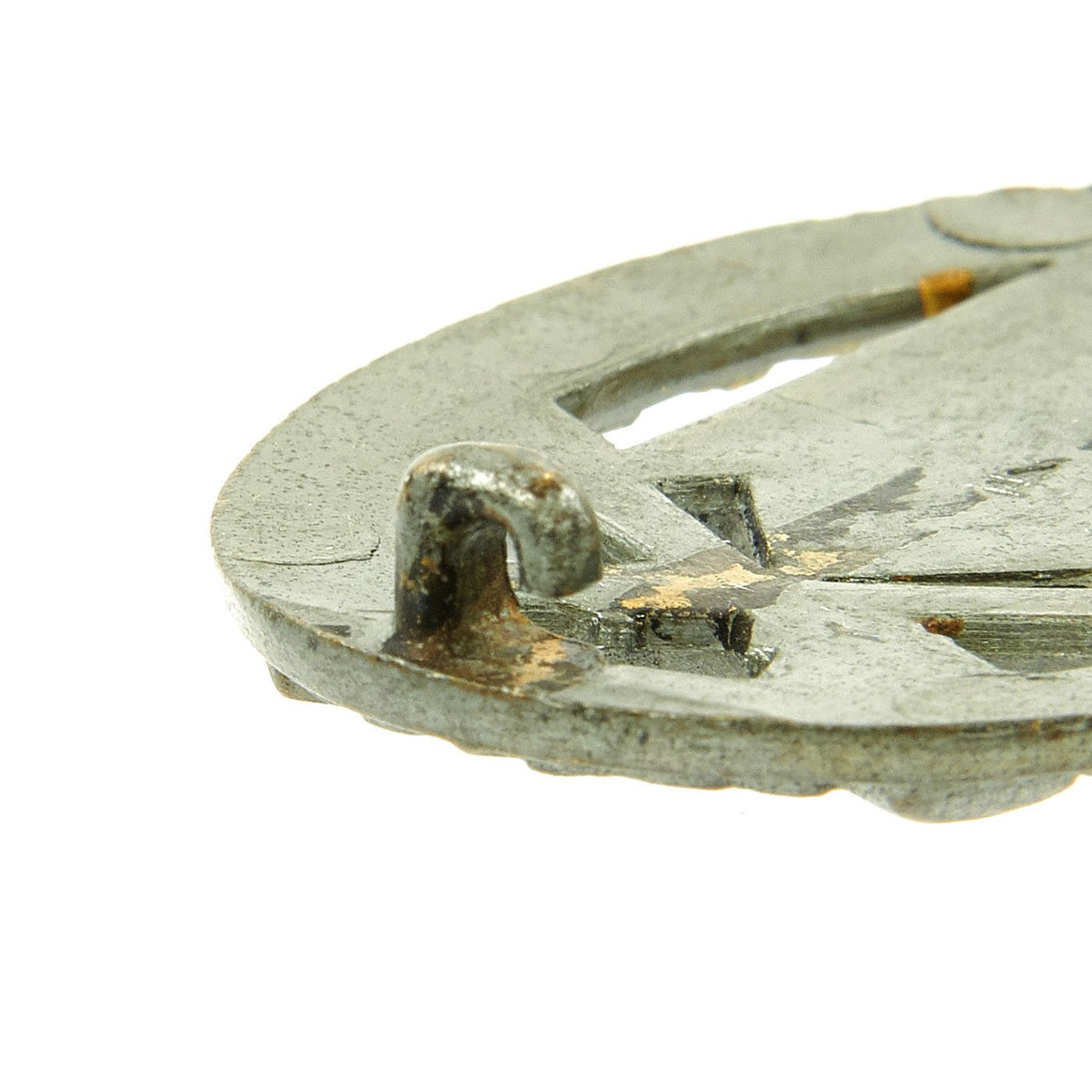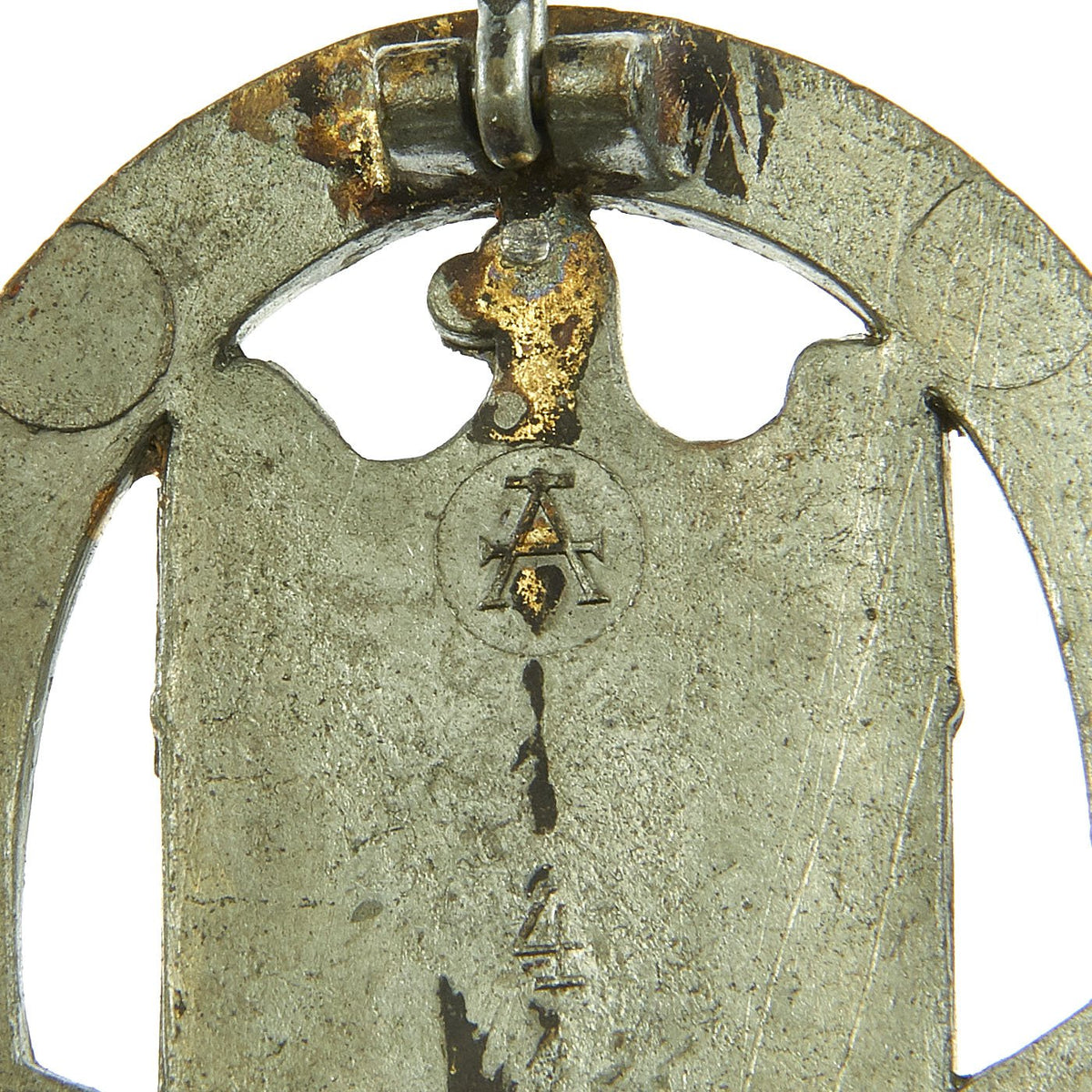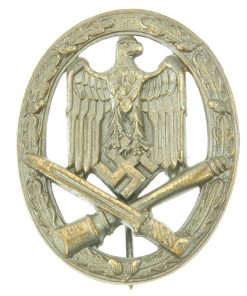Original German WWII Bronze Grade General Assault Badge by F. W. Assmann & Söhne Original Items
$ 275,00 $ 110,00
Original Items: Only One Available. This is a very nice condition Bronze Grade General Assault Badge with a Solid Back and functional pin. The badge measures approximately 2 1/8″ x 1 5/8″, and is in very good condition. Like many of these badges, over the years the bronze has worn and flaked away, with only small areas left on the front and back, but definitely still visible. The back has a very nice steel pin and hinge, which lock into a die struck hook. It is also is marked with the “barred A” trademark, of F. W. Assmann & Söhne of Lüdenscheid, a large maker of belts, buttons, and other accoutrements.
A very nice example. ready to add to your collection!
The General Assault Badge (German: Allgemeines Sturmabzeichen) was a military decoration awarded during World War II to personnel of the German Army, Waffen-SS and Ordnungspolizei (order police) who supported an infantry attack but were not part of specific infantry units and therefore did not qualify for the Infantry Assault Badge. It was instituted by General Walther von Brauchitsch on 1 June 1940.
Design
The decoration, designed by the Berlin-based firm of Wilhelm Ernst Peekhaus, was an oval disk that measured 5.3 cm (2 in) by 4.2 cm (2 in) by .6 cm (0 in) wide. A wreath of five oak leaves runs around the circumference on each side of the medal with a pair of acorns at the base. Inside the wreath is a large Wehrmacht-style eagle with folded wings grasping a swas which itself surmounts a crossed bayonet and stick grenade. The medal was held in place on the uniform with a pin and catch.
From 22 June 1943, the medal was adapted with a small plate at the base with either 25, 50, 75 or 100 to recognize those soldiers that had taken part in numerous attacks. These were known as grades II through IV, accordingly. On the Class IV badge, the oak leaves which run around the circumference on each side of the medal, along with the bayonet and hand grenade were larger in size. Further the wreath was gold in color.
Criteria for award
The medal was originally designed for presentation to combat engineers, as well as members of the artillery, anti-aircraft and anti-tank who supported infantry units in combat. It could also be awarded to medical personnel attending to battlefield casualties in “close combat conditions”. Prior to the introduction of the Tank Destruction Badge, the General Assault Badge could be conferred for the single-handed destruction of tanks or armored vehicles.
Other determining factors for award:
– Ineligibility for the Infantry Assault Badge
– Participation in three infantry or armored attacks on three different days; or
– Participation in three infantry or armored indirect assaults on three different days.
Fast Shipping with Professional Packaging
Thanks to our longstanding association with UPS FedEx DHL, and other major international carriers, we are able to provide a range of shipping options. Our warehouse staff is expertly trained and will wrap your products according to our exact and precise specifications. Prior to shipping, your goods will be thoroughly examined and securely secured. We ship to thousands clients each day across multiple countries. This shows how we're dedicated to be the largest retailer on the internet. Warehouses and distribution centres can be located throughout Europe as well as the USA.
Note: Orders with more than one item will be assigned a processing date depending on the item.
Before shipping before shipping, we'll conduct a thorough inspection of the items you have ordered. Today, the majority of orders will be delivered within 48 hours. The delivery time will be between 3-7 days.
Returns
The stock is dynamic and we cannot completely manage it because multiple stakeholders are involved, including our factory and warehouse. So the actual stock may alter at any time. It's possible that you may not receive your order once the order has been made.
Our policy is valid for a period of 30 days. If you don't receive the product within 30 days, we are not able to issue a refund or an exchange.
You can only return an item if it is unused and in the same state as the day you received it. You must have the item in its original packaging.
Related products
Uncategorized
Uncategorized
Uncategorized
Uncategorized
Armoured Fighting Vehicles of the World: AFVs of World War One (Hardcover Book) New Made Items
Uncategorized
Uncategorized
Uncategorized
Australian WWII Owen MK1 Machine Carbine SMG Custom Fabricated Replica with Sling Original Items
Uncategorized
Uncategorized
Uncategorized
Uncategorized
Uncategorized
Uncategorized
Uncategorized
Uncategorized
Uncategorized
Uncategorized
Uncategorized
Angolan Rebel 1970s era 60mm Inert Display Mortar from Angolan Civil War Original Items
